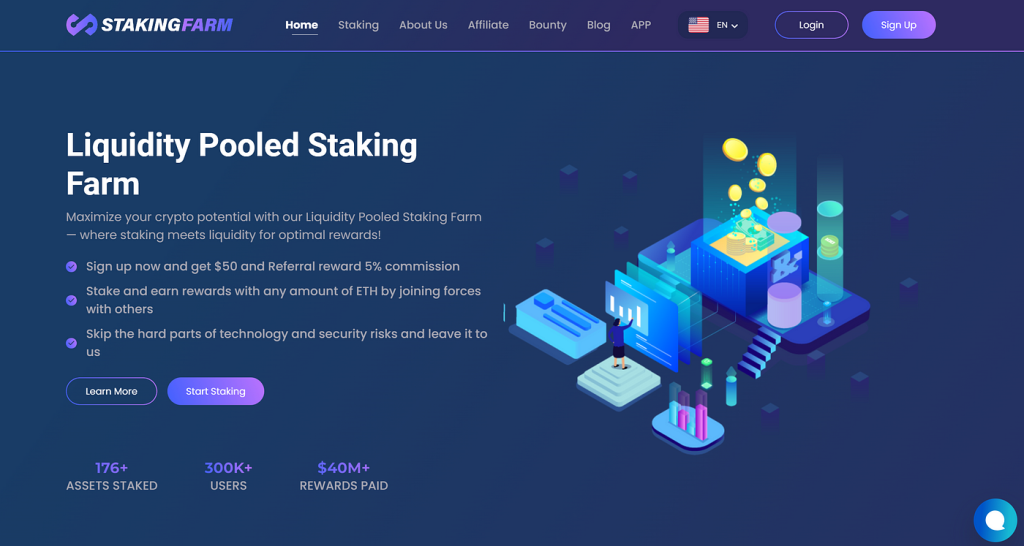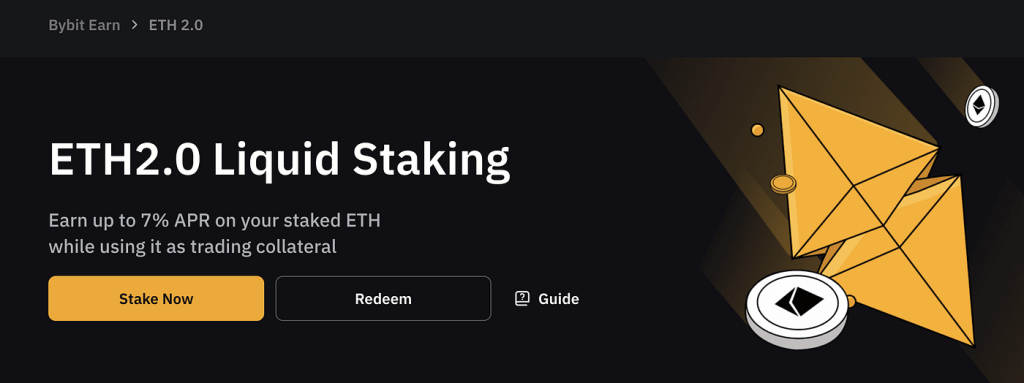ARTICLE AD BOX

The post 4 Best Ethereum Staking Platforms with Highest Returns for 2024 appeared first on Coinpedia Fintech News
Which platform is best for staking Ethereum? We identify top ETH staking platforms based on APR, lock-up periods, payout frequency, user-friendliness, and more.
Ethereum staking services provide a secure way to generate income from the protocol’s earnings and validation activities. Our team of experts has thoroughly reviewed various platforms to identify the most reliable and easy-to-use options for earning returns on your Ethereum. We have compiled a list of the top five Ethereum staking services.
These services are recognized for their intuitive interfaces, security protocols, and attractive yields on Ethereum stakes. Through these leading platforms, you can effectively oversee and potentially grow your Ethereum holdings.
What is the Best Ethereum Staking Service?

StakingFarm.com is a popular crypto exchange centralized staking platform recognized for emphasizing security and regulatory compliance. It provides professional staking services. With StakingFarm, users can stake their crypto and receive interest payments, enabling them to earn an annual percentage yield (APY) on their assets.
StakingFarms supports staking for Polygon (MATIC) and Ethereum (ETH) digital assets and more, providing users with passive income opportunities.
In addition, in order to allow customers to understand staking, StakingFarm provides a $50 registration reward for staking Crypto. The profit generated from staking belongs to the user, and it also provides a 5% referral commission.
Pros:
a) Daily Payouts: StakingFarm allows users to receive daily payouts, providing them with more frequent access to their earnings.
b) Enhanced Yields with StakingFarm Payouts: Users can achieve up to 12% yield on the “Platinum” tier
c) Unlimited Staking: The platform imposes no maximum limit on staking, granting crypto investors the flexibility to stake any desired amount.
Cons:
a) Minimum Staking Amount: StakingFarm may have a minimum requirement of $50 for some cryptocurrencies, but the platform provides $50 of registered capital, and the profits go to users, which will help cryptocurrency investors with smaller investment amounts participate.
2. Bybit
Staking ETH on Bybit allows users to contribute to the Ethereum network’s validation efforts, with the potential to earn an Annual Percentage Yield (APY) of up to 7%. The platform supports the automatic exchange of staked ETH into stETH on a one-to-one basis, enabling daily reward accumulation according to the stETH holdings of the user. stETH is a token issued by the decentralized staking pool, Lido. When you stake ETH in their network, you will receive stETH in return.

Pros and Cons of Staking Ethereum on Bybit
Pros
- Earn up to 7% APR on your staked ETH
- Use your staked ETH as collateral for margin trading
Cons
Bybit is a third-party protocol and carries its own set of risks
3. Binance
Binance, as a leading cryptocurrency exchange, offers Ethereum staking with attractive features for users looking to earn rewards on their ETH holdings.
Binance Ethereum staking stands out for its flexibility and user-friendliness. Users can enjoy the convenience of daily rewards at 3.27% APR, allowing them to see the staking rewards in real-time.
One of the key benefits of staking Ethereum on Binance is the absence of a mandatory lock-in period, offering unparalleled flexibility compared to other platforms. This feature allows users to stake their ETH without worrying about having their assets tied up for a fixed duration. Users can stake their ETH and receive a token called WBETH in return. WBETH represents staked ETH plus any staking rewards users have earned.
Here are some of the benefits of staking Ethereum on Binance:
- Earn staking rewards: You’ll automatically earn rewards on your staked ETH.

- Flexible lock-in period: You can redeem your ETH at any time. There is no fixed lock-in period for staking on Binance.
- WBETH token: You’ll receive WBETH, representing your staked ETH and staking rewards. WBETH’s value increases over time as staking rewards accumulate.
- Use WBETH in DeFi applications: You can use WBETH in other Binance products or DeFi applications to earn additional yields.
Pros and Cons of Staking Ethereum on Binance
Pros
- Daily reward payouts enhance investment growth opportunities.
- No lock-in period offers flexibility in managing staked assets.
- Robust security measures protect users’ investments.
- WBETH token can be used in DeFi applications
Cons
- The accessibility and specifics of staking rewards may vary depending on the user’s country and market conditions.
4. RocketPool
RocketPool is a prominent decentralized Ethereum (ETH) staking platform, catering to users with its ETH 2.0 staking solution. Users can stake 8, 16, or 32 ETH and receive rETH tokens, benefiting from RocketPool’s network of node operators that ensure security and decentralization. With its appeal to those preferring a decentralized staking approach, RocketPool offers up to 3.48% APR in ETH rewards, suited for advanced on-chain users.
The platform’s decentralized framework reduces dependency on single points of failure, enhancing security. Users should be aware of inherent risks like smart contract vulnerabilities. Despite this, RocketPool’s secure and streamlined decentralized staking experience makes it a notable choice in the Ethereum staking ecosystem for those with blockchain proficiency.

Pros and Cons of Staking Ethereum on Rocketpool
Pros
- Offers greater decentralization compared to Lido DAO, enhancing network security and resilience.
- The rETH token may offer better tax efficiency compared to other liquid Ethereum tokens, potentially reducing tax liabilities for holders.
- No mandatory lock-up period for staked assets, providing flexibility and liquidity to users.
Cons
- Offers a lower Annual Percentage Rate (APR) than some alternative staking solutions
.png)
 9 months ago
3
9 months ago
3








 English (US)
English (US)